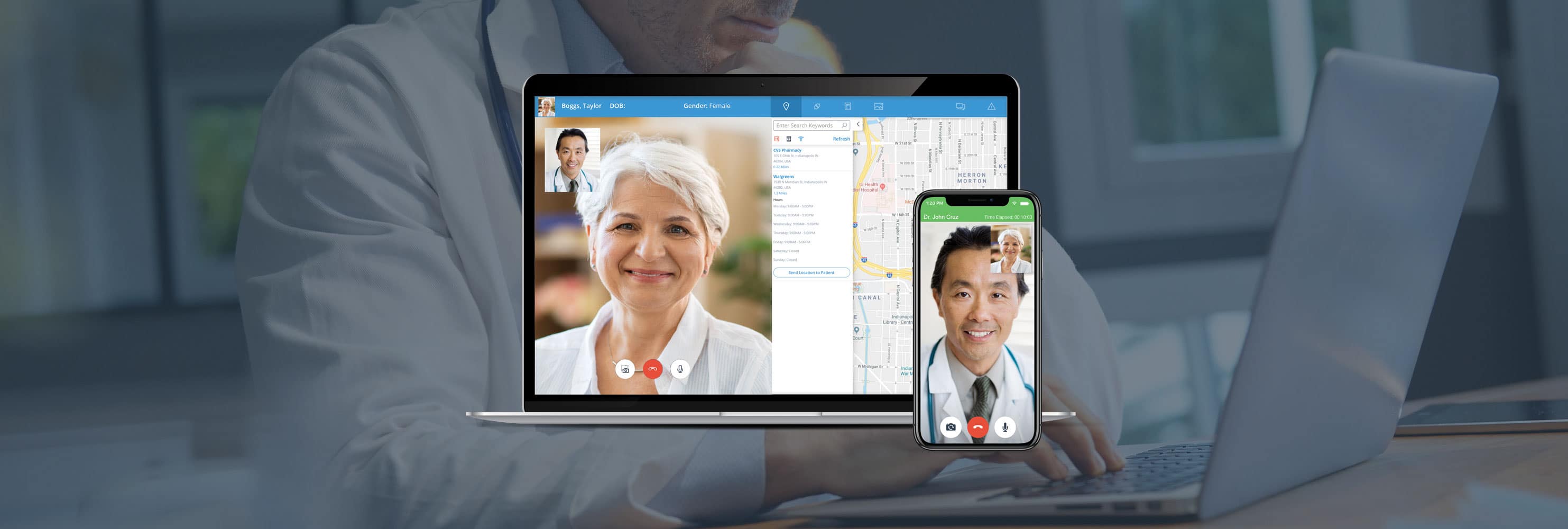
How Telehealth Can Improve Access to Care in 2021
Telehealth has changed healthcare forever and has significantly affected the practice o...
July 14, 2023
It’s easy to see that telehealth is all around us. From the upcoming appointment text reminder you received from your family doctor to the post-visit survey from your chiropractor, telehealth is prevalent in today’s tech-based society. And it’s not expected to go anywhere anytime soon.
In 2022, the global telehealth market was valued at $128.12 billion and according to Fortune Business Insights, it is projected to grow from $142.96 billion to $504.24 billion by 2030. Needless to say, if you haven’t jumped on the telehealth bandwagon yet, now is the time. But what all is out in the telehealth industry for you to choose from and which type of telehealth is best for your patient base?
Although many different varieties of telehealth exist, there are four main categories of telehealth that exist in today’s medical industry. The benefits of each category vary and can support you, and your patients, in different ways depending on what you need to get a full scope of their health.
1. Live Video-Conferencing
The most well-known type of telehealth, live video conferencing is just what it sounds like – a live, two-way video-based conference between a patient and their healthcare provider. This type of telehealth is widely used by everyone from physicians in local hospitals to providers who own their own private practice. Live video-conferencing not only eliminates commute time and stress for both the patient and provider but also helps to bring healthcare to areas, usually rural, that don’t have nearly as many healthcare options as urban areas.
2. Asynchronous Video (AKA Store-and-Forward)
Asynchronous video is the electronic delivery of a patient’s documented health history outside of real-time, used by a healthcare provider. Commonly used in rural areas when providers are consulting with a specialist in another location, this type of telehealth also helps bring healthcare to areas where it, especially in terms of specialists, is sparse.
3. Remote Patient Monitoring (RPM)
Often used for seniors or in senior living areas, remote patient monitoring is the collection of a patient’s health data from a patient or resident in one location that is then electronically sent to a healthcare professional (provider, nurse, etc.) for monitoring and review. RPM is especially helpful in senior living areas in order to prevent falls and keep a watchful eye on residents’ vitals.
4. Mobile Health (mHealth)
Mobile health is the use of smart devices (smartphones, tablets, etc.), and the health-based software apps developed for these devices, that supports continued healthcare. Many health-based apps exist now and can monitor everything from a diabetic patient’s blood sugar level to one’s daily water intake. These apps help to encourage healthier lifestyle behaviors and also (if designed to) can integrate with a patient’s personal health records.
In the ever-growing telehealth market, there are many types of telehealth that can improve your patients’ lifestyle behaviors and boost their overall health. Likewise, telehealth provides you with a full scope of your patients’ daily vitals allowing you to take action and/or modify treatment in order to improve their health.
If you are interested in finding out more about telehealth and how to integrate it into your practice, contact us. We can provide you with more info on how it works and how it will benefit both you and your patients.